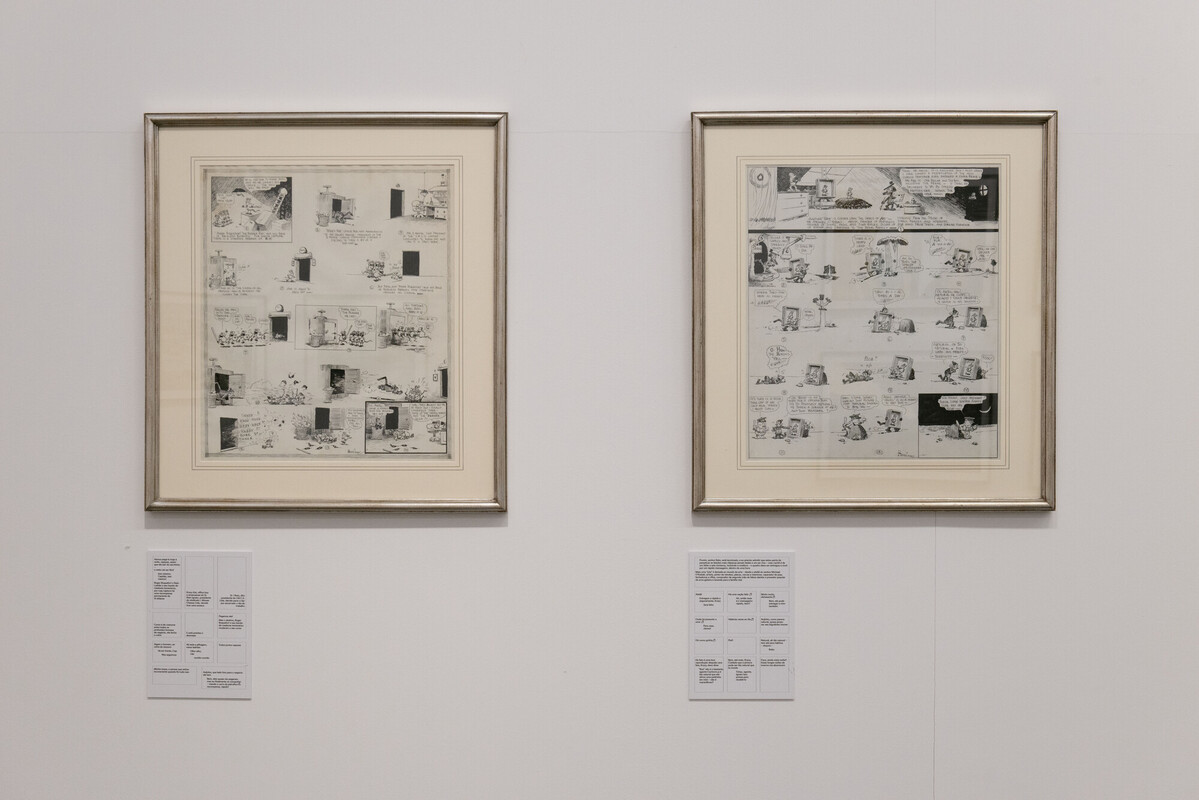
George Herriman
“[…] He is but a shadow himself, caught in the web of this mortal skein. We call him ‘Cat,’, We call him ‘Crazy’ […] Forgive him, for you will understand him no better than we, who linger on this side of the pale.”
In these words, George Herriman (1880–-1944) reflected on the inscrutable condition of Krazy Kat. In essence, the influential comic strip narrates the misadventures of Krazy, a gender-neutral cat – the ambiguity of his gender has never been clear – who is madly in love with Ignatz the mouse. This love is not reciprocated by Ignatz, whose constant aggressions towards the protagonist, throwing bricks at his head, are misinterpreted by the feline, who sees them as signs of affection. In turn, Krazy has a secret admirer, the police dog Offissa Pupp, whose constant surveillance of the mouse is aimed at preventing such aggressions or imprisoning him when he succeeds in committing them.
Everything in Krazy Kat seems to want to overcome traditional impositions: the inversion of roles between its main trio of characters, the non-binary nature of its protagonist, the continuous experimentation in the composition of its pages, the new forms of language created by the author, etc. What puts Herriman on either side of the fence? The tension in the plot of Krazy Kat has given rise to a multitude of readings, one of them being the author’s own biography through his own racialization. Some want to see in Krazy Kat a representation of George Herriman’s struggles with his own identity as a mixed-race man in an all-white world under Jim Crow’s segregationist laws.¹ The ambiguity, not just of the cat, but of the whole comic series, could reveal the duality between being or not being a thing, which can be extrapolated to issues not only of race but also of gender and class.
Today, a reinterpretation of these works gives us a glimpse of Krazy Kat and George Herriman hopping and moving from one side of the fence to the other, breaking down the boundaries of that fence, and throwing Ignatz’s bricks like missiles to disarm and deactivate hierarchies and identities.
rafael garcía
translated from Spanish by ana laura borro
George Herriman (New Orleans, LA, USA, 1880 – Los Angeles, USA, 1944) was a cartoonist. In addition to the acclaimed series Krazy Kat, he created characters such as Musical Mose, Professor Oto and His Auto, Acrobatic Archie, The Jolly Jackies, and Major Ozone’s Fresh Air Crusade. His first comic strip, Lariat Pete, appeared in 1903 in the San Francisco Chronicle.
1. Segregationist laws that were in effect in several southern states of the United States between the years 1877 and 1965. [e.n.]

 Português
Português